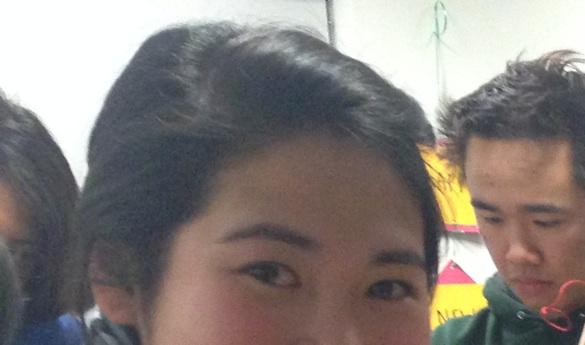Students join in Vietnamese festivities for Lunar New Year
Many students have heard about the Chinese New Year, but the Vietnamese and other cultures also celebrate the Lunar New Year, which is the beginning of a new year based on the lunar calendar.
On Jan. 29, Mason’s Vietnamese Student Association celebrated the Lunar New Year with cultural food, traditional games and New Year’s crafts.
The Vietnamese New Year, or Tết, is an important cultural holiday to Vietnamese families which typically involves three days of celebration.
At VSA’s Lunar New Year event, students came together to learn about and celebrate the New Year. Officers of the association started the event by explaining that this year marks the year of the Horse. They also pointed out that the reason for the red decorations and clothing was because red is the color of luck. Many students knew about the event because they are members of the VSA, but there were also students who heard about the event through friends or Facebook and decided to come check it out.
No matter their background, students enjoyed the celebration and some even had favorite traditions in their own home. VSA’s Culture Chair Addie Nguyen said that her favorite part of the Lunar New Year was food and family. Nguyen said, “New Years is when a lot of the family gets together.”
Another tradition that is extremely popular is gambling games, which is what member Andrew Phung said was his favorite part of the celebration. Elizabeth Thai, external vice president of VSA, agreed by saying, “I think it’s probably the games with everyone, the whole family. It gets competitive but it’s a fun kind of competitive.”
In addition to food and gambling, students participated in New Year’s crafts. Kt Nguyen, a freshman involved with VSA, explained that the red envelopes that were used to make different folded art are called “li xi.” Nguyen explained that people put money in the envelopes and give them to someone as “a physical way to bless someone.”
Another cultural element of the Lunar New Year celebration was a traditional lion dance. Students Andy Huynh and David Vo were the performers behind the lion costume who shared a bit of this tradition’s history as well as cleared up some misconceptions about the practice.
Vo said, “The lion dance traditionally began in China. It was traditional around New Years to flee away and scare away demons…and the lion would scare them away and they would bring good luck to the farmers.”
Huynh agreed with Vo and added, “In this case, it usually goes with firecrackers because that helps scare away the demons as well. The ‘li xi,’ which is the little red envelopes, is what we get with the lions. Basically, they eat it for good luck. Some people put money in it as a way to tip the dancers but also as a sign of like respect and also good fortune for the New Year.”
Huynh explained the history of the dance’s name. “In Vietnamese,” Huynh said, “it’s called ‘mua lan’ and that basically means ‘dancing lion’ but in actuality the word ‘lan’ means unicorn because there’s no lions in Vietnam or China…”
Another thing Huynh stressed on was that lion dancing is harder than it looks. Huynh said, “a thing about lion dance is that it is also a sport too. It’s done in many different countries, not really in America, but mostly in like China, Malaysia and Singapore…mostly the southeastern Asian countries.”
There are many people involved in a lion dance team. Vo said that it normally includes, “a lion—there’s usually many lions or a single lion which is two people, a head and a tail, a drummer, a cymbalist and a gongist.”
The lion team, after hours of practice, rallies together to perform the traditional rite of the Lunar New Year. Huynh said, “It’s basically a team sport even though the lion is the main focus.”
Though the lion costume is commonly mistaken for a dragon, it has certain defining characteristics. Huynh explained, “You can tell that it’s a lion because it has a horn, and also it’s fluffy, and it has two people. A dragon, the costume is with a stick and with multiple people… and they tend to just walk around whereas a lion dancer, they have to do flips, jumps, eat, and look cute. They actually mimic the lion.”
To see footage of the lion dance performed by Huynh and Vo, watch the video below.
Video courtesty of Sara Moniuszko

